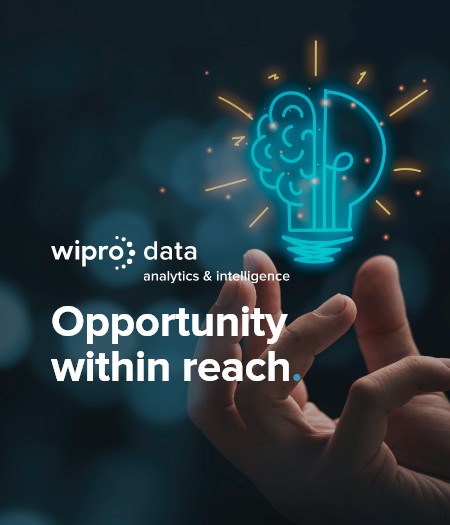Data is the fundamental building block of business. Powered by technology, enhanced by AI, harnessed by people. Data is information, insight, and opportunity.
Wipro lives at the heart of it. We connect art and science, intelligence and creativity, data and people. We see the opportunities that data puts within reach and our experience, helps us put it to work.
Turning ambitions into reality.
 Locations
Locations








